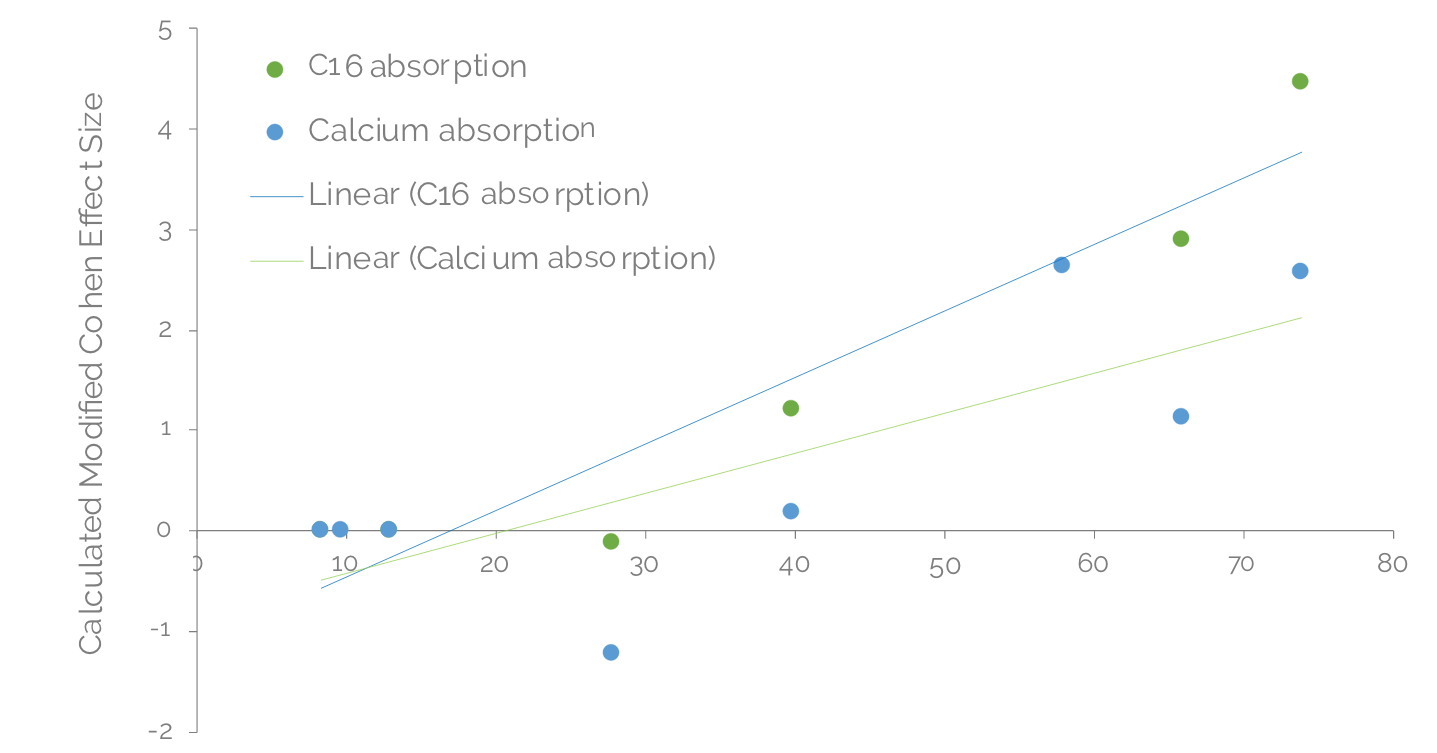
INFAT®PRO is a new grade specially formulated to reach a higher concentration* of palmitic acid in the middle position of the triglyceride than INFAT®, and by adding INFAT®PRO to the formula, sn-2 palmitate level will be even closer to human milk.
Higher concentration of sn-2 palmitate, and thus higher absorption of palmitic acid, has been shown in multiple studies to reduce the formation of calcium soaps in baby’s stool [1-3]. With INFAT®PRO, manufacturers can offer infant formulas with improved fat composition.
A review of the clinical studies of infants fed formulas with increased levels of sn-2 palmitate has shown a relationship between levels of sn-2 palmitate and fatty acid and calcium absorption [2].
Figure 1 shows the correlation between the level of sn-2 palmitate (C16:0) out of total palmitic acid in infant formula, plotted against fatty acid and calcium absorption calculated as a modified Cohen’s effect size. The results show that progressively increasing level of C16:0 at sn-2 position on the triglycerides, leads to a dose-dependent increase in both fat and calcium absorption. The reduction in fecal calcium soaps is accompanied by a decrease in the incidence of harder stools.
The percentage of C16:0 in formula triglycerides (x-axis) was plotted against the mean percentage of C16:0 absorption (green circles) or calcium (blue circles) reported in clinical studies with preterm and term infants to derive the Cohen effect.
Palmitic acid at sn-2 position of total palmitic acid (%)

*INFAT®PRO is offered with minimum 60% sn-2 palmitate in the concentrate
Figure 1: Modified Cohen’s effect size of the effect of the 16:0 position in formula triglycerides on the absorption of 16:0 and calcium in
term and preterm infants. Graph was adapted from Bar-Yoseph et al [2].
*standard formula refers to an infant formula containing standard vegetable oil blend
References
1) Bar-Yoseph, F., et al., ‘sn-2 palmitate reduces fatty acid excretion in Chinese formula-fed infants’, Journal of Pediatric Gastroenterology and Nutrition, 2016. 62(2): p. 341.
2) Bar-Yoseph, F., Y. Lifshitz, and T. Cohen, ‘Review of sn-2 palmitate oil implications for infant health’, Prostaglandins, Leukotrienes and Essential Fatty Acids, 2013. 89(4): p. 139-143.
3) Havlicekova, Z., et al., ‘Beta palmitate–a natural component of human milk in supplemental milk formulas’, Nutrition Journal, 2015. 15: p. 1-8.
